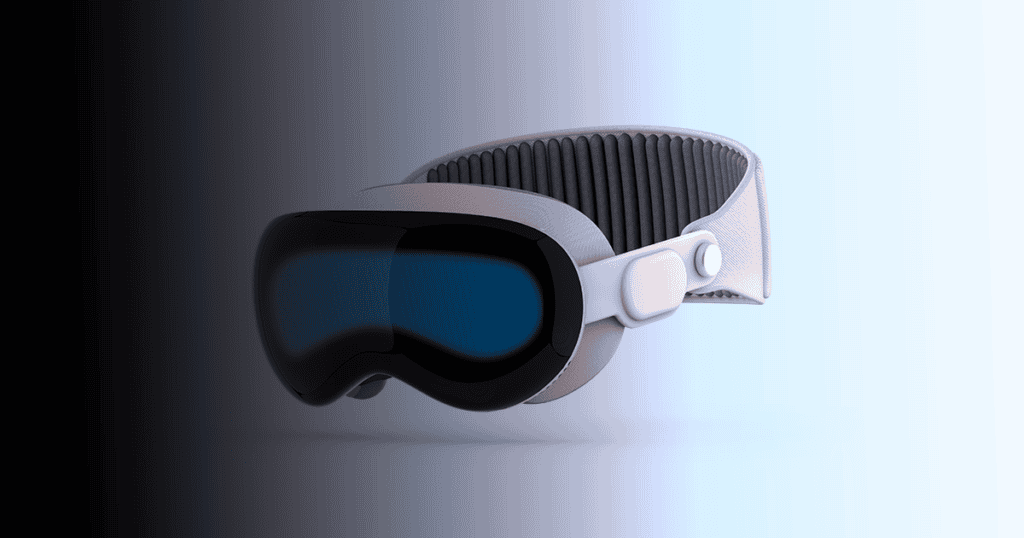Apple has reportedly suspended work on the second-generation Vision Pro headset to singularly focus on developing a more affordable version of the device. According to a report by The Information, Apple is shifting its resources towards creating a cost-effective model that will cater to a broader market.
Vision Pro Product Line Strategy
Apple was widely believed to have plans to divide its Vision product line into two models:
- A “Pro” model.
- A lower-cost standard model.
However, over the past year, Apple has gradually assigned fewer employees to the next Vision Pro headset project, indicating a shift in priorities. This decision reflects Apple’s strategic approach to adapt to market demands and consumer needs.
Focus on Reducing Costs and Upgrading Components
Initially, Apple focused on:
- Reducing the cost of the first-generation model’s components.
- Creating an upgraded display for the next model.
These efforts were aimed at making the Vision Pro more accessible without compromising on the advanced technology that it offers. However, the high cost of components and the challenge of integrating new technologies have led Apple to reconsider its approach.
Suspension of Second-Generation Vision Pro
Now, Apple has reportedly told at least one of its suppliers that it has suspended work on the next-generation Vision Pro headset. This suspension allows the company to concentrate its efforts on developing a more affordable “Vision” product with fewer features. This shift in focus is expected to make the Vision lineup more appealing to a wider range of consumers.
Development of a Cheaper Vision Device
Apple began work on a cheaper Vision device in 2022 under the codename “N109”. The objective is to sell this model for around the same price as a high-end iPhone, which retails for up to $1,600. Initially, Apple aimed to release this model by the end of 2024. However, as of earlier this year, a firm prototype was still not in place, leading to a revised release date likely beyond the end of 2025.
Challenges in Cost Reduction
Apple has been struggling to reduce the model’s costs without sacrificing too many features. Key challenges include:
- Retaining the high-end display components in the low-cost model, which are among the most expensive parts of the device.
- Finding ways to simplify the design without compromising functionality.
These challenges highlight the complexity of balancing cost and performance in advanced technological devices. Apple’s engineers are working to innovate within these constraints to deliver a product that meets both performance and affordability goals.
Features of the Cheaper Model
The cheaper model is expected to:
- Feature the same high-end displays as the Vision Pro.
- Have fewer cameras.
- Include a simpler headband.
- Utilize smaller speakers.
- Be at least one-third lighter than the Vision Pro.
These features indicate that while the cheaper model will retain some of the high-quality components of the Vision Pro, it will be designed to be more accessible and user-friendly. The reduction in weight and simplification of components are aimed at making the device more comfortable and appealing to everyday users.
Production Insights
One supplier, responsible for key components of the Vision Pro, cut production by 50% in May after Apple predicted weaker demand than expected. Information from this supplier suggests that Apple has produced no more than 500,000 Vision Pro units this year, with no plans to make significantly more through August.
This reduction in production indicates that Apple is carefully managing its inventory in response to market demand. By aligning production with actual demand, Apple aims to avoid overproduction and maintain a balance between supply and demand.
Future Possibilities
Despite the current suspension, it is still possible that Apple will resume work on a second-generation Vision Pro headset in the future. This potential future development suggests that Apple remains committed to innovation and may introduce advanced features in subsequent versions of the Vision Pro when the market conditions are favorable.
Key Points:
1. Suspension of Second-Generation Vision Pro:
- Apple has suspended work on the next-generation Vision Pro to focus on a cheaper model.
2. Development of a Cheaper Model:
- The cheaper model, codenamed “N109,” aims to sell for around $1,600, similar to a high-end iPhone.
3. Challenges in Development:
- Apple faces challenges in reducing costs without sacrificing features, likely delaying the release beyond 2025.
4. Features of the Cheaper Model:
- High-end displays, fewer cameras, a simpler headband, smaller speakers, and a lighter design.
5. Production Insights:
- Reduced production by suppliers indicates lower-than-expected demand for the Vision Pro.
Detailed Breakdown of Vision Pro Expansion:
Apple’s decision to focus on a more affordable Vision model reflects a strategic move to capture a broader market segment. By developing a lower-cost version, Apple aims to make its innovative technology accessible to more consumers, potentially increasing its market share.
Development and Market Strategy:
- Apple’s engineering teams are working to innovate within cost constraints to deliver a product that meets both performance and affordability goals.
- The cheaper Vision model is expected to retain some high-quality components, making it a competitive option in the market.
Consumer Impact:
- The introduction of a lower-cost Vision model will provide consumers with more options, catering to different budget levels and preferences.
- This move could enhance Apple’s competitive edge in the augmented reality and virtual reality market.
Market Adaptation:
- Apple’s strategic focus on developing a cost-effective model highlights its ability to adapt to changing market conditions and consumer demands.
- The potential future development of a second-generation Vision Pro indicates Apple’s ongoing commitment to innovation.
Final Thoughts
Apple’s strategic shift towards developing a more affordable Vision Pro model reflects its commitment to making advanced technology accessible to a broader audience. While the second-generation Vision Pro is on hold, the focus on cost reduction and maintaining key features in a cheaper model underscores Apple’s dedication to innovation and market adaptability. It remains to be seen when the second-generation Vision Pro will resume development, but the move to create a more budget-friendly option is a step towards expanding Apple’s market reach.



